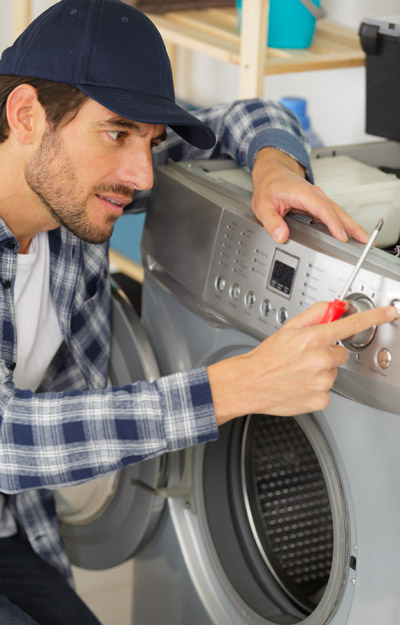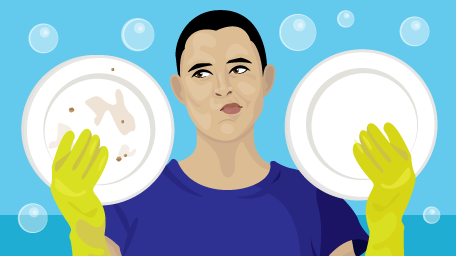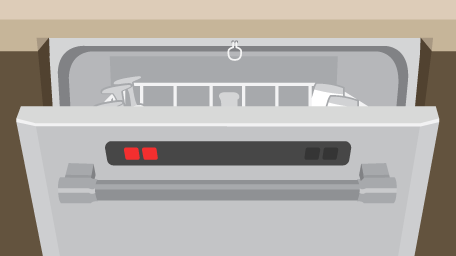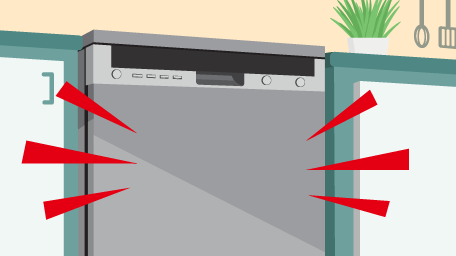Make sure you haven't got the discount earlier.

How to Remove a Dishwasher in 8 Easy Steps
Considering an upgrade or dealing with dishwasher issues? You might need to remove it, and it's a task you can handle without professional help. Our guide makes it easy, guiding you through safely disconnecting the water and power connections and using basic tools like a wrench, screwdriver, and pliers to remove the unit from below your countertop.
Reasons for Removing a Dishwasher
Sometimes, you might find yourself needing to take out your dishwasher, and there are a few good reasons why:
- Upgrading to a New Model: If you're eyeing that latest dishwasher model, it might be time to say goodbye to your old one and welcome a new, modern unit into your home.
- Maintenance or Repair: Dishwashers don't last forever. They can start to show their age, with parts wearing out or even breaking. Removing it is necessary for deep cleaning, troubleshooting, or repairing parts that are not easily accessible while it is installed.
- Water Damage or Mold: Water where it shouldn't be is a big no-no. If you spot leaks, water damage to your cabinets, or mold around your dishwasher, it's important to pull it out and fix the issue. Leaving it be can cause more damage over time.
- Relocation: Are you moving to a new place? You might need to remove your dishwasher either to take it with you because you really like it, or because the one waiting for you in the new place isn't up to scratch.
FAQs About Removing a Dishwasher
If you're planning to remove your dishwasher, you might have some questions. Here, we've answered the most common ones to help you get ready for the next steps, where we'll show you exactly how to do it.
Can I remove my dishwasher by myself?
Yes, you can! If you feel confident in following step-by-step directions and know your way around basic tools, you can uninstall your dishwasher on your own. However, if you’re unsure about any part of the process, especially when it comes to electrical or plumbing connections, it might be a good idea to call in a pro.
What should I do if water leaks during the removal process?
Keep a bucket or towels ready to catch any drips. If a leak occurs, ensure the water supply valve is fully turned off and clean up any spills right away to avoid damaging your floor or cabinets.
How do I dispose of my old dishwasher?
Recycling is a great option. Check with your local waste management to see if they take large appliances like dishwashers. If your dishwasher is still in working condition, you might also think about donating it or selling it secondhand.
How to Remove a Dishwasher
You're now set to uninstall your dishwasher. With the right tools in hand, you're about to see how surprisingly straightforward this process can be.
Tools Needed to Remove a Dishwasher
- Bucket and Old Towels
- Wrench
- Screwdriver
- Pliers
- Optional: Furniture Sliders or Dolly
Step 1: Turn Off the Power
Since you’ll be working with electrical wires, it’s important to turn off the power to the dishwasher. Head to your circuit breaker box and switch off the breaker for your dishwasher. To be sure you've turned off the right one, try turning on the dishwasher; if it stays off, you can proceed to the next step.
Step 2: Turn Off the Water Supply
You'll need to stop the water flow to your dishwasher. Find the water shutoff valve connected to your dishwasher's water line—this is usually located under your sink. Gently turn the knob clockwise until it stops. Be careful not to overtighten it, as it could break.
Step 3: Disconnect the Water Supply Hose
Find the water supply hose that connects your dishwasher to the shutoff valve, usually located under the sink. Check the hose for leaks or rust. If it looks worn out, you'll want to change it to a replacement hose later when you're reinstalling the dishwasher. Get an adjustable wrench to unscrew the water line. Keep a bucket and some towels ready just in case water drips out. Then, with pliers, gently pull off the dishwasher's drain hose and put the end into the bucket to avoid water leaking out onto the floor.
Step 4: Disconnect the Drain Hose
The next hose to disconnect is the drain hose, which links your dishwasher to either the sink or a garbage disposal unit, often through an air gap. Find the hose, loosen the clamp that holds it in place, and disconnect it. Once disconnected, aim the end of the hose into the bucket.
Step 5: Remove the Mounting Brackets
Your dishwasher is kept in place by some brackets that connect it to the bottom of your countertop. This stops it from shaking or moving when it's running. Just open the dishwasher door to find these brackets and unscrew them from the countertop. You can either leave the brackets attached to the dishwasher or remove them completely.
Step 6: Lower the Legs
Before you can move your dishwasher, you will need to lower it by unscrewing the legs. Depending on the make and model of your dishwasher, you will either have legs that can be lowered straight away, or you’ll need to access them by removing a faceplate. The faceplate can usually be removed by unclipping it or unthreading its mounting screws.
When you have access to the legs, lower them down by twisting them clockwise until they are as low as you can get them. This will create a gap between it and the countertop, making it easier to pull out.
Step 7: Slide Out the Dishwasher
Gently pull the dishwasher away from its cavity. It’s great if someone can help you out here to make sure you don't drop it or pull too hard. Remember, there are water and power lines still attached, so be careful. Using furniture sliders or a dolly can also help with this step. Lift the dishwasher slightly as you pull it to avoid scratching your floor.
Step 8: Final Disconnections
With the dishwasher partway out, you’ll find it easier to see and reach any remaining hoses or wires. Disconnect these carefully, making sure your dishwasher is entirely free and ready to be moved completely.
With the dishwasher out of the way, what's next? Depending on its condition, consider repairing, selling, donating, recycling, or responsibly disposing of it. Don't forget to prepare the space for any new installations. And if you're eager for more renovation projects, find your next venture in our extensive collection of home improvement guides.





























